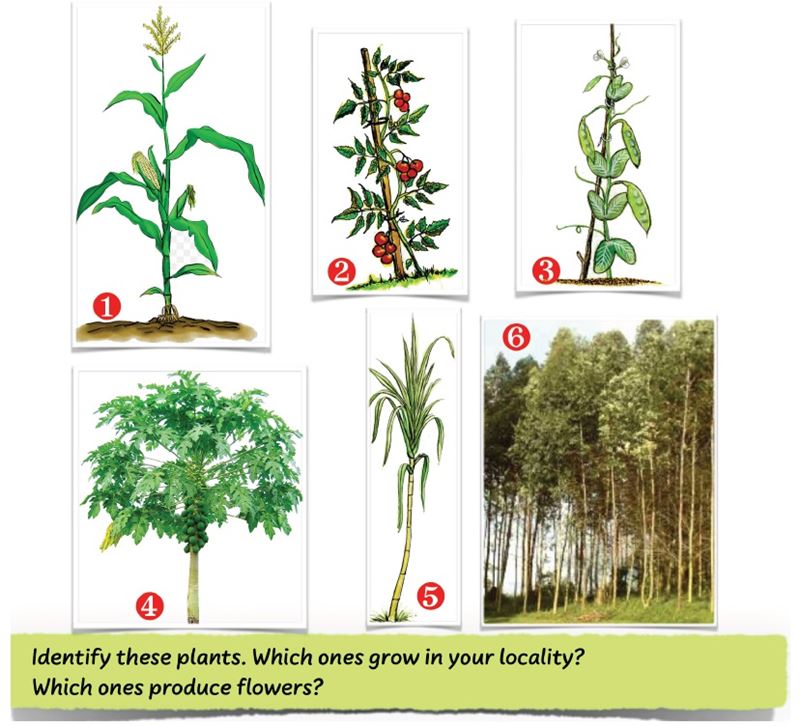Getting Ready: In our learning activities, we will:
- Collect green plants in our own locality.
- Observe and identify flowering and non-flowering plants.
- Classify plants into flowering and non-flowering plants.
- Use digital devices to take photographs of flowering and non-flowering plants in our own locality.
- Observe precautions when handling harmful plants.
- Discuss the importance of flowering plants.
- Develop interest by finding out more about classifying plants. We will share this information with others.
Activity 1.1: Learning new words
See the language link:
Write these key words in your journal or in flashcards.
Find out their meaning. What will you use?
- A print dictionary? The Internet?
- Find out from friends?
- Ask parents, a guardian or a caregiver?
- Join the English Language club?
- Join the Debate Club?
How else can you find out?
Share your ideas with others.


